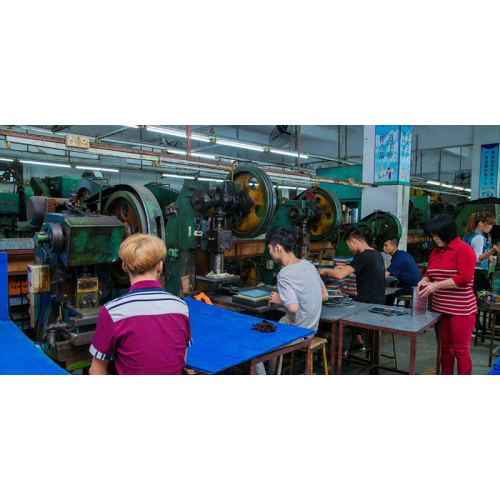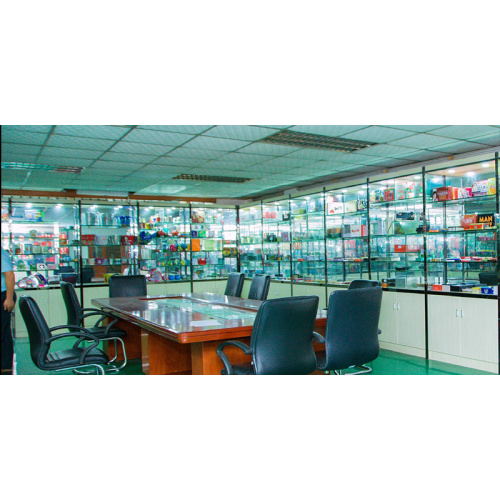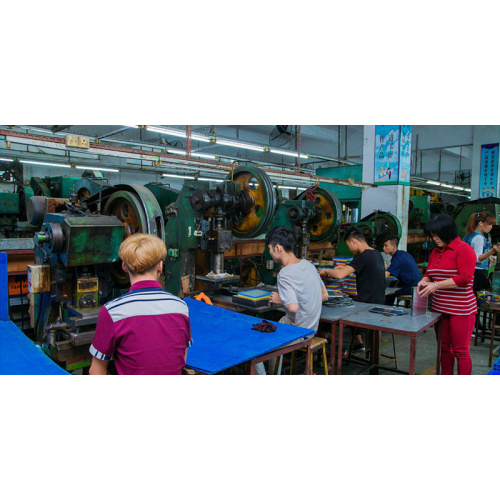[China Packaging Network News] Steel
1. Low carbon steel sheet

In metallurgy, iron-carbon alloys containing less than 0.25% of carbon are called low-carbon steels, and thin steel plates made of low-carbon steel are called low-carbon steel plates. Low-carbon steel sheets are rolled from steel ingots or continuous cast steel. According to different rolling methods, low-carbon steel sheet can be divided into hot-rolled low-carbon steel sheet and cold-rolled low-carbon steel sheet. It can be used as the original plate for producing tin-plated steel sheets and non-tin-plated steel sheets; it can also be used to directly manufacture metal packaging containers such as containers, ordinary steel drums, etc.; it can also be used as a tying material. Containers made with it have greater strength and stiffness, and have the advantages of low cost, good processability, and the like.
The low-carbon thin steel plates used in the manufacture of metal packaging containers in China include ordinary carbon structural steel low-carbon steel plates and high-quality carbon structural steel low-carbon steel plates. When the mechanical performance requirements of metal packaging containers are not high and do not need to withstand deep drawing, ordinary carbon structural steel low carbon steel sheets can be used. When the mechanical performance requirements of metal packaging containers are high, high quality carbon structural steel low carbon steel sheets can be used. The carbon content of the low carbon steel sheet for manufacturing metal packaging containers is generally between 0.05% and 0.22%.
2. Tinplate
Tinplate is commonly known as tin-plated steel plate. The English abbreviation is SPTE. It refers to cold-rolled low-carbon steel plate or strip coated with commercial pure tin on both sides. It is also called tin-plated iron. Tin mainly prevents corrosion and rust. It combines the strength and formability of steel with the corrosion resistance, solderability and aesthetic appearance of tin in a material that is resistant to corrosion, non-toxicity, high strength, and good ductility. Tinplate was called Tin Plate in the early days because the first batch of iron bars in China were imported from Macao in the middle of the Qing Dynasty. At that time, Macao was a transliteration of 'Makou', so the Chinese generally called it 'tinplate'.
The characteristics of the tin plate vary depending on the tin plating method, plating thickness, and surface treatment method. However, the essence of the characteristics of the tin plated components. The chemical composition of the tin plate is shown in Table 1. The tin plate is composed of five layers of a steel substrate, a tin-iron alloy layer, a tin layer, an oxide film, and an oil film. It is worth noting that a tin-iron alloy is generated between the steel substrate and the tin layer. This is produced by reflowing and passivating after tin plating on the steel plate. It not only has a mediating effect, it firmly adheres to the surface of the steel plate, but also brightens the tin layer to compensate for the presence of pores in the tin plating layer. , improve the corrosion resistance of steel plates. In general, the thickness of the tin plating layer is 0.5 to 2.0 μm, and the tin layer thickness of the hot tin plating method is greater than the tin layer thickness of the tin plating method. Although the tin layer above is thin, it is a very useful 'garment'. Iron coat put on this coat is not only beautiful, but also has a lot of excellent features. Tin is chemically stable. It does not react chemically with water. Even if it is allowed to contact with moist air for a long time, it will only gradually form a dense oxide film on its surface. This layer of tin can prevent tin. Continue to oxidize. This is the reason why the tinplate is resistant to corrosion.
Metal packaging mainly uses tinplate as raw material, and tinplate pieces are of superior quality in Japan, Korea, and Taiwan, because tinplate pieces are soft and flexible, and they are easy to mold different shapes. The general use of tinplate packaging products to the high-end market as the goal, the world's major consumer markets for tinplate packaging in Europe and the United States. Tinplate boxes are mainly used for food packaging, and others are used for the packaging of alcoholic beverages, chocolate and tea. The market for the tobacco industry is also very large because such products require sealed tinplate packaging.
3. Wuxi steel plate
The chrome-plated steel sheet is referred to as chromium-plated steel sheet and is a tin-free steel sheet. It is a new-type can-making material developed due to the low metal tin resources and high cost. The United States, Europe and Japan have more and more applications to replace some of the tin plate materials. Chromium is a hard, silvery white shiny metal with good hardness, wear resistance, and matrix binding, and high heat resistance. The original plate used for the chrome plate is the same as the tin plate. They are low-carbon steel plates, but the chrome plating layer is very thin (<1.3 μm). The process is the same as that of tin plate. Therefore, in general, the original tin plating production line needs only a slight modification, and the addition of a chrome plating bath can achieve tin or chrome plating. The chrome plated structure has four layers: a steel substrate, a metallic chromium layer, a hydrated chromium oxide layer, and an oil film. Although the corrosion resistance of the chrome plate is inferior to the tin plate, it also has a certain corrosion resistance. It is suitable for the packaging of weak acidic foods. This type of food is used in a large amount in the international market, such as meat, fish, poultry, dairy products, vegetables, carrots, peas, beets, potatoes and various beverages, soups and so on. At present, chrome-plated steel plates are mainly used in the production of beer bottle caps, beverages and neutral food cans, and are rarely used as food cans.
4. Tin plate
Galvanized steel sheet, also known as tin sheet, is one of the materials used to make barrels (cans) and is mainly used for the manufacture of industrial product packaging containers. It is after hot-dip galvanizing after pickling the steel sheet, so that the surface of the steel sheet is coated with a zinc protective layer with a thickness of 0.02 mm or more. Because the electrode potential of zinc is lower than that of iron, the chemical properties are relatively lively, and a layer of zinc oxide film can be quickly formed in the air. This layer of zinc oxide film is very dense, protecting the zinc and the steel plate from corrosion, even if it is rubbed off. The galvanized layer protects the iron due to the oxidation of zinc, which greatly improves the corrosion resistance of the steel sheet. After the container is made of galvanized sheet, there is no need for surface anti-corrosion treatment. Therefore, galvanized steel sheet is widely used to make metal packaging containers. This kind of container has high strength and good sealing performance. It is widely used in industrial product packaging. Packaging materials.
Galvanized steel sheet, commonly known as tin sheet, is a low carbon steel sheet with galvanized surface. The galvanized layer is a protective coating that protects the steel plate from atmospheric corrosion during use. The galvanized layer is usually passivated. Passivation film formed after passivation in chromic acid or chromate solution is not easy to interact with moist air, so the anti-corrosion ability is strong. However, zinc is easily soluble in acids or alkalis and reacts easily with sulfides, so it is not suitable for packaging acidic, alkaline, or sulfide products.
5. Coated steel plate
A coated steel sheet, ie, an organic coated steel sheet, refers to a coated metal material obtained by coating an organic coating on a surface of a steel sheet. Such coated steel plates do not need to be further painted after they have been manufactured into various types of packaging products. Therefore, coated steel plates are often classified as precoated steel plates. According to estimates of relevant experts, coated steel sheets will be widely used in the metal packaging industry to replace the current backward production process of metal packaging products in the production process. The coated steel sheet combines the advantages of both organic polymer and steel sheet. It not only has good colorability, formability, and corrosion resistance of organic polymers, but also has high strength and easy processing of steel sheets, and can be easily blanked. , bending, deep drawing, welding and other processing.
In the European Packaging Competition in recent years, the best prizes were for metal cans, which used easy-open covers and ordinary 0.17mm thick steel plate substrates, and coated steel plates coated with polymer coatings on their surfaces. The manufacturer believes that it is also possible to use tear-off caps, and it is not necessary to vent the can while cooking cans. This square tank has 20% less space than a round package and has an axial load carrying capacity of 2 kN. It is completely within the performance range of conventional metal cans, and high-quality patterns can be printed on the four sides of the can body.
The British company Carris introduced a new decorative steel plate to the market several years ago. This material consists of a chromium oxide plated steel plate and several layers of polymer coating film on the surface. It is currently used in Europe. This polymer spray material has several layers of composite films that can be metalized and printed with holographic labels. It has a protective layer that is conducive to printing. Since the entire process is carried out on a flat surface, this series of decorative steel panels is not suitable for stretching tanks, but is ideal for decorative containers, easy-open covers, twist-off caps, crown caps, composite tank end caps and three-piece cans s material. The surface of the material is bright and clean, and once opened, the tinplate container market is opened.
The British company, Freilette, is the most famous supplier of polymer-coated steel and its products have been on the market for several years. When the polymer film is cemented to the surface of the steel sheet, the material must be melted and rapidly cooled in order to produce a packaging with good barrier properties, strong corrosion resistance, and eye-catching. There is also a new type of coating process in which the resin is directly extruded onto the steel sheet and is currently used for the production of food cans.
6. Coated iron
A composite material made by compounding a plastic film on a cold-rolled steel sheet by a fusion method or a sticking method is called "laminated steel," and may be called "coated iron" with respect to paint iron. This kind of composite material has been widely used in home appliances and decorative materials over 10 years ago. However, the application in the printing and canning industry has only begun to rise in recent years.
The impact resistance and corrosion resistance of coated iron are unmatched by coating iron. Because it is a plastic film composite board. In other words, the coating iron has the conflict between corrosion resistance and adhesion, and it is easily solved for coated iron. This is the ideal material for packaging tomato sauce cans and two-piece cans. Because the coated iron is a kind of metal material with both the plastic film and the metal sheet. Therefore, under normal circumstances, it is not necessary to use tinplate as a substrate for the production of coated iron. Under the current situation where the price of tinplate has skyrocketed, the use of cold-rolled sheet coating has shown a cost advantage. The production of coated iron is free from exhaustion of solvent exhaust gas, and the film formation temperature is only about 70°C. Therefore, the production cost is also much lower than that of coating iron.
Aluminum
Aluminum is a resource-rich white light metal, and the world’s aluminum production is second only to steel. Its application in the packaging industry ranks first in non-ferrous metals. In recent years, aluminum has been used more and more in packaging because of its excellent performance. Its density is small, only 1/3 of steel, lighter weight; excellent processing, easy to stamp into a variety of complex shapes; strong corrosion resistance, no rust; barrier properties, shading, and fragrance protection Excellent, can effectively protect the product; high thermal conductivity, easy to sterilize aluminum cans; silvery white, beautiful color, and high reflectivity to light, easy to print, good printing effect; non-toxic and tasteless, will not be due to aluminum Ion escaping creates an odor in the interior of the food; scrap aluminum containers can be re-melted without environmental pollution. As a packaging material, aluminum is generally made into aluminum plates, aluminum blocks and aluminum foils, and aluminized films. Aluminum plates are usually used as canning materials or lidding materials; aluminum blocks are used to make extruded and thinned stretch-formed cans; aluminum foils are generally used for moisture-proof inner packagings or composites and flexible packaging.
Aluminum plate
Pure aluminum plate containing more than 99.9% aluminum, the thickness is generally between 0.25? 0.3mm. It is soft and has low strength, so it is less used as a packaging material, but it is also useful as a wine container. Aluminum alloy is made by adding a small amount of magnesium, manganese and copper alloys to aluminum. Aluminum alloys commonly used in packaging are aluminum-magnesium alloys and aluminum-manganese alloys, also known as rust-proof aluminum alloys. The strength and hardness of the aluminum alloy plate are obviously improved, the corrosion resistance is strong, the polishing is good, and the surface is kept bright for a long time. Alloyed aluminum plates are used to make canned containers. When used in fish and meat cans, they do not exhibit the phenomenon of blackening and vulcanization of the tinned cans. They are more of a packaged beverage and do not cause blisters and changes in taste.
With the improvement of the overall level of the beer and beverage manufacturing industry, the amount of aluminum cans in the world is increasing year by year. The per capita consumption of aluminum cans exceeds 400 cans. The United States is the largest producer and consumer of aluminum cans in the world. It is mainly used for packaging beverages. In European beverage cans, tin cans and aluminum cans each account for about half. At present, China's aluminum cans have a relatively low per capita consumption and have broad space for development.
At present, there are eight countries that can produce aluminum alloy cans in the world: the United States, Brazil, Australia, Japan, South Korea, Germany, France, and Russia. There are also some countries and regions that can produce can lids and pull rings, such as our country. Taiwan Province, Canada, Bahrain, Italy, etc.
With the development of the production of cans by Southwest China Aluminum Strip Co., Ltd. and the hot rolling line of Nanshan Group Aluminium Processing Co., Ltd., which was put into operation in early 2007, the Asian Aluminum Group's aluminum industrial park hot rolling line was put into operation at the end of 2007. Bohai Aluminum Co., Ltd. joint trials in 2008. The cans produced in China will compete in the global can market, and China may become one of the six largest can producers in the world. In 2008, China Southwestern Aluminum Strip Co., Ltd. may have a canning output of 70,000 tons, Nanshan Group and Asia Aluminum Group may produce about 30,000 tons, and the national output may reach 100,000 tons, accounting for 55% of domestic demand.
2. Aluminum foil
Aluminum foil is made of pure aluminum with a purity of 99.5% or more and a thickness of 0.005 to 0.2 mm. It is light and lustrous, has strong reflection ability, and can be used as a heat-proof insulating package; good barrier property, gas-impermeable body and water vapor; easy to process, easy to process into various shapes; easy to print, gluing, painting, coloring, Embossing, printing, etc.; adaptable to temperature, stable in shape at high or low temperatures; excellent shading, excellent fragrance protection, etc. The biggest disadvantage of aluminum foil is that it is not resistant to acid and alkali, it cannot be welded, and its tear strength is low. Aluminum foil packaging has the advantages of high barrier properties, light weight, anti-ultraviolet radiation, long shelf life at room temperature, etc., which makes the application of aluminum foil in various packaging fields increasingly. Aluminum foil packaging has been widely used in food, beverages, dairy products, pharmaceuticals, electronic products and other fields.
The use of aluminum foil is very extensive, and experts have divided it into more than 20 varieties according to their application characteristics. Due to the difference in the level of economic development in different countries, there is also a large gap in the aluminum foil consumption structure. In developed countries in Europe and America, the aluminum foil used for packaging accounts for 70% of the total demand. In the Chinese market, aluminum foil is mainly used as raw materials for industrial manufacturing, and packaging aluminum foil accounts for only 30% of total domestic demand. Although the development of aluminum foil packaging is relatively late, the current market is growing rapidly and the prospects are of concern. At present, China can consume 161,300 tons of aluminum foil each year, and the annual cigarette consumption for cigarette packaging amounts to 35,000 tons.
3. Aluminized film
Metallized film is a new type of composite flexible packaging material, in which the aluminized film is the most widely used one. In addition, gold, silver, copper, etc. can also be plated. Aluminum foil is easy to form pinholes during packaging and use to reduce its barrier properties. Therefore, aluminum foil is often used as a composite material with polymer plastics, paper or other metal sheets. A special process is used to apply a very thin layer of aluminum on the surface of the packaging plastic film or paper (single or double sided). Because the aluminum plating layer is relatively brittle and easily damaged, it is generally covered with a protective plastic film such as polyethylene, polyester, nylon and the like. The thickness of the aluminized layer is about 300 angstroms, which is thinner than aluminum foil.
The substrate (i.e., the carrier film) of the aluminized film is a plastic film and paper. The most commonly used plastic films are polyester (PET), nylon (NY), biaxially oriented polypropylene (BOPP), polyethylene (LDPE), and polyvinyl chloride (PVC). The first three kinds of aluminum-plated films have excellent adhesion and luster, and are excellent aluminum alloy composite materials. Aluminized polyethylene film is popular because of its low price and good decoration. Aluminized polypropylene film can also be made into easy-to-open seals for easy opening of pharmaceutical packaging.
Using a thermoplastic film as a bonding layer, aluminum foil and paper can be combined to form a multilayer aluminum-plastic composite paper. This composite paper combines the high barrier property of aluminum foil, the flexibility of plastic film, the folding endurance and impact resistance of paper, and becomes a high-performance packaging material without causing pollution to the contents and human body. , It is easy to meet the hygienic safety standards for packaging; at the same time, because the resin can be decomposed when heated to a high temperature, the paper and aluminum foil can be separated, thereby greatly improving the material recycling and regeneration, reducing the waste of materials and environmental pollution.
Aluminum-plastic composite cans are made of aluminum foil, plastic film and kraft paper (cardboard), and can be made into square, cylindrical, rectangular, conical and other forms of packaging cans. This can is generally divided into outer skin, paperboard, inner liner and inner skin. The composite material also has the characteristics of being non-toxic, odorless, and non-contaminating. It can be reused and recycled.
Aluminum foil is mainly used for blister packaging in pharmaceutical packaging. Blister packs are mainly made of polyvinyl chloride (PVC) sheets and 0.02 mm thick aluminum foil. Blister packaging has become the most important packaging method for western medicine tablets and capsules. China's traditional Chinese medicine tablets, powders, capsules, pills and other packaging are gradually changing from paper bags, simple plastic bags and glass bottles to aluminum-plastic blister packaging. Blister packs have the advantages of moisture resistance, portability, safety and hygiene, etc. With the development of drug release technology, the market will be even broader.
Aluminized film is a new type of composite packaging material that is both successful and economical. In the past 10 years, it has been widely used in Europe, America, and other countries, and has replaced aluminum foil composite materials in many product packaging (for example, in the packaging of cigarettes, aluminum-plated paper is gradually replacing aluminum foil). Aluminized films are mainly used for vacuum packaging of foods such as snacks, snacks, meats, and agricultural products, as well as packaging and trademark materials for cigarettes, pharmaceuticals, alcohol, cosmetics, and the like.









